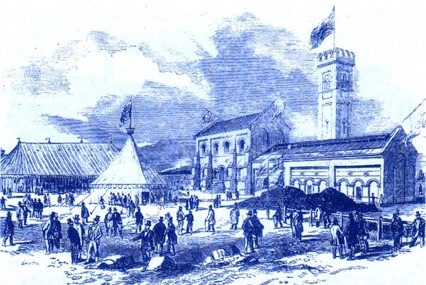Welcome to our exploration of the forgotten waterworks in the United Kingdom, where we delve into the rich history and architectural wonders that have been lost to time. In this article, we will take you on a journey through these hidden gems, shedding light on their significance and the stories they hold. Join us as we uncover the secrets of these neglected structures and pay homage to their enduring beauty.
A Brief History of Waterworks in the UK
Waterworks have played a vital role in the development and growth of cities and towns throughout the United Kingdom. From the early days of manual water extraction to the sophisticated systems we have today, the evolution of waterworks is a testament to human ingenuity and the importance of clean water supply.
In the 19th century, as the industrial revolution swept across the nation, the demand for clean water skyrocketed. To meet this demand, waterworks were built across the UK, showcasing stunning architectural designs that blended functionality with aesthetic appeal. These structures served as vital hubs for water purification and distribution, ensuring the well-being of communities.
The Forgotten Gems
1. The Abandoned Abbey Mills Pumping Station, London
Located in East London, the Abbey Mills Pumping Station stands as a testament to Victorian engineering. Designed by architect Charles Driver, this grand structure was built in the 19th century to combat the city’s growing sanitation crisis. The station’s stunning Gothic Revival architecture, adorned with intricate details and soaring arches, makes it a true architectural gem. Despite its historical significance, the Abbey Mills Pumping Station has fallen into disrepair over the years, its grandeur fading away.
2. The Lost Elan Valley Aqueduct, Wales
Nestled in the picturesque Elan Valley of Wales, the Elan Valley Aqueduct was once a marvel of engineering. Built in the early 20th century, this aqueduct transported water from the Elan Valley reservoirs to the growing city of Birmingham. Stretching over 70 miles, this engineering feat showcased the mastery of Victorian engineers. Unfortunately, due to modernization and the construction of new pipelines, the Elan Valley Aqueduct has been forgotten, its remnants hidden amidst the Welsh countryside.
3. The Decaying Southern Outfall Sewer, London
The Southern Outfall Sewer, built in the late 19th century, was an essential component of London’s sewage system. Stretching over 6 miles, this massive brick tunnel served to divert sewage away from the River Thames and into the newly constructed Crossness Pumping Station. The architectural beauty of the Southern Outfall Sewer, with its intricate brickwork and vaulted ceilings, is a stark contrast to its current state of decay. Neglected and forgotten, this once-vital infrastructure now stands as a haunting reminder of a bygone era.
The Significance of Preserving Forgotten Waterworks
While these forgotten waterworks may have lost their functionality, their historical and architectural significance should not be overlooked. Preserving these structures not only honors the craftsmanship of the past but also provides valuable insights into our engineering heritage. They serve as tangible reminders of the progress we have made in water management and sanitation.
Moreover, these forgotten waterworks have the potential to become unique cultural attractions, drawing tourists and locals alike. By revitalizing these neglected structures, we can breathe new life into the surrounding communities and create educational opportunities that celebrate our shared history.
Conclusion
The forgotten waterworks of the United Kingdom hold a treasure trove of history and architectural brilliance. From the grand Abbey Mills Pumping Station to the sprawling Elan Valley Aqueduct and the decaying Southern Outfall Sewer, each structure tells a story of human innovation and the challenges we faced in providing clean water to our growing cities.
As we continue to uncover these lost gems, it is crucial that we recognize their value and work towards their preservation. By doing so, we not only honor the past but also create a brighter future, where these architectural wonders can once again shine as beacons of our engineering achievements. Let us embrace the mission of preserving these forgotten waterworks and ensure that their legacy lives on for generations to come.
